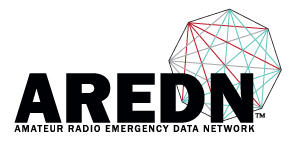There are NO alerts at this time.
Alerts
News
AREDN production release 3.22.6.0 is now available
AREDN production release 3.22.6.0 is now available. This is the release you've been looking for :-)
Since the last production release, there have been 136 separate ‘pull requests’ in the AREDN github repository. Those requests pulled these significant improvements and new features into the AREDN software:
1. The conversion from Perl programming to Lua is complete - the result is a significantly smaller, somewhat faster, code base.
2. Due to the recovered space in the image, tunnels are now always installed, so nothing needs to be done with them during future upgrades.
3. After this upgrade, future upgrades should be much more reliable, especially on low memory devices.
4. Tunnels will be prevented from accidentally connecting over the mesh.
Tunnels normally connect via the WAN interface, that being the point of the things. However, if the WAN interface on a node goes down for some reason (the tunnel server/client Internet fails) the node will select a new way to talk to the Internet by first routing over the Mesh. When this happens, tunnels could end up being routed partially over the mesh, which is bad because tunnels are also part of the mesh. So, we now prevent this by default by adding a firewall rule.
5. You can now adjust the poll rate for alerts....
Link Quality Manager (LQM)
Thanks to recent developments by Tim KN6PLV, we are introducing a new tool to help manage AREDN networks.
Nightly Build 1265 contains a number of improvements broadly called Link Quality Management. It’s designed to make the AREDN network more stable and improve the available bandwidth. Tests with these changes have shown improvements from modest to close to 200% in link throughput, tested end to end with iperf3.
Documentation is here
Nightly Build Reminder
The AREDN team greatly appreciates all of the testing of the nightly builds as they roll out and introduce the new code base and features. We are paying close attention to your reports of successes and problems found.
Just as a reminder:
IMPORTANT NOTE: While AREDN encourages you to download, install and test the nightly builds and report any issues found, DO NOT install them in any node that doesn’t have easy access (e.g., towers, water tanks or mountain tops). By definition nightly builds are not to be considered production grade software.
AREDN Development Plan 2022
Following their recent code production release, AREDN has embarked on an ambitious development plan. Here’s a basic overview of what is on their plate
Replace Perl code with Lua
The programming language for the user interface, services and many other functions is written in Perl. The Perl libraries are very large and AREDN has embarked upon a project to replace it with Lua, a much lighter weight programming language designed to run in embedded devices.
In steps, the team will update the “read-only” page to Lua:
Main, Mesh Status, etc.
Then the read-write pages will be updated:
-
Basic Setup
-
Port Forwarding DHCP and Services
-
Tunnel Server
-
Tunnel Client
-
Administration
-
Advanced
-
Configuration
-
And some others
Resync with OpenWRT
Then the code base will be updated to OpenWRT 21.02.1. Besides code enhancements and security fixes, it brings in:
- ...
Pages
Announcements
Support AREDN on Amazon Prime Day
If you plan to take advantage of the extended Amazon Prime Day on July 15 and 16, please consider supporting the AREDN Project with your purchases.
Simply shop at smile.amazon.com/ch/83-0671991 and AmazonSmile donates to Amateur Radio Emergency Data Network Inc

Call for Code interview with AE6XE and K5DLQ
AREDN developers Joe Ayers AE6XE and Darryl Quinn K5DLQ were interviewed by Daniel Krook, the Chief Technology Officer for the Call for Code Global Initiative and the IBM Code and Response.
This fascinating discussion focuses on questions and ideas that will interest software developers and participants in the 2019 Call for Code Challenge.
You can find the video on the IBM Developer channel on Twitch.
AREDN is a 2019 Call for Code Program Supporter. Join Call for Code in building solutions to improve disaster relief efforts and a chance to win $200,000.

- ‹ previous
- 5 of 35
- next ›
Theme by Danetsoft and Danang Probo Sayekti inspired by Maksimer













